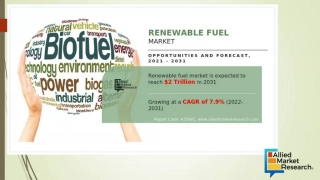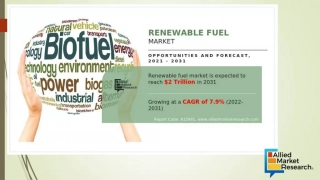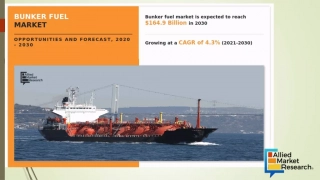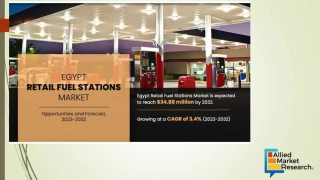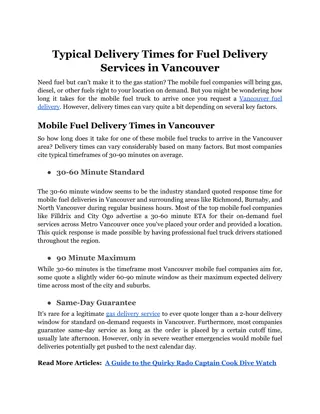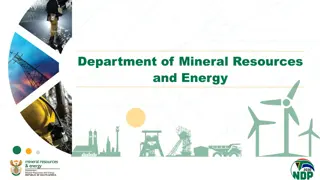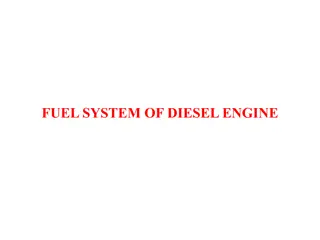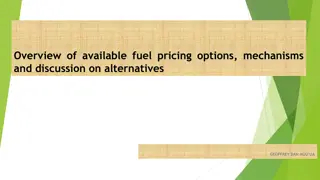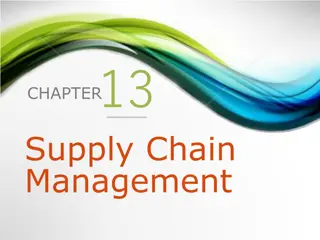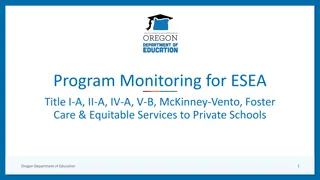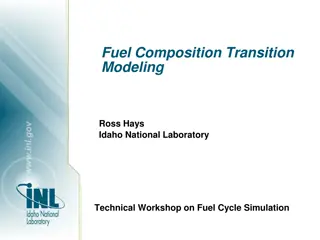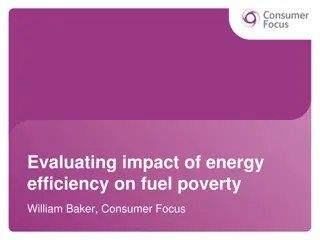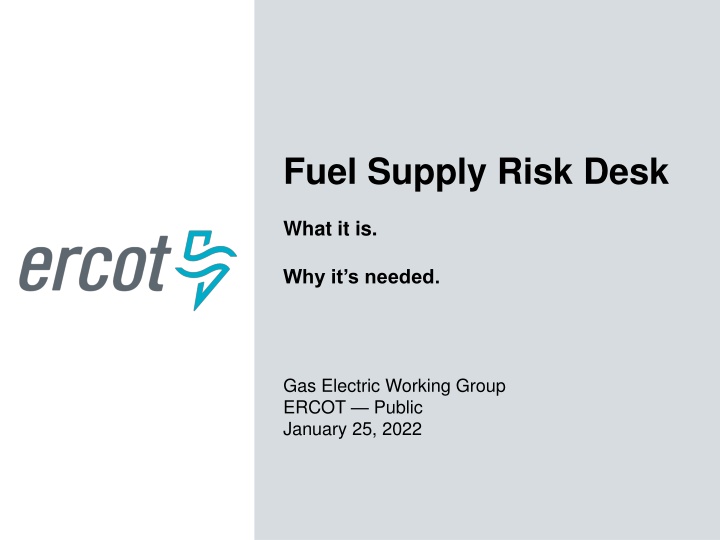
ERCOT Fuel Supply Risk Desk Operations
Explore the functions of ERCOT's Fuel Supply Risk Desk, its importance in ensuring reliable electricity supply, and how ERCOT plans to mitigate potential risks related to resource adequacy and outage coordination. Learn about the role of ISOs and RTOs with similar desks and the strategic planning processes involved.
Download Presentation

Please find below an Image/Link to download the presentation.
The content on the website is provided AS IS for your information and personal use only. It may not be sold, licensed, or shared on other websites without obtaining consent from the author. If you encounter any issues during the download, it is possible that the publisher has removed the file from their server.
You are allowed to download the files provided on this website for personal or commercial use, subject to the condition that they are used lawfully. All files are the property of their respective owners.
The content on the website is provided AS IS for your information and personal use only. It may not be sold, licensed, or shared on other websites without obtaining consent from the author.
E N D
Presentation Transcript
Fuel Supply Risk Desk What it is. Why it s needed. Gas Electric Working Group ERCOT Public January 25, 2022
Contents ERCOT Overview 3-4 ISOs with Fuel Supply Resource Desks 5 How We Plan 6 What We Don t Know 7 Requests for Additional Information 8 Details: Current-Day Planning vs. Desired Outcomes 9-18 2 ERCOT Public
ERCOT Overview We Keep the Lights On Does not own generation or transmission assets Ensures reliability of the electric system Provides non- discriminatory access to transmission Coordinates power generation, dispatch and transmission Independent operation of the wholesale and retail electric markets 3 ERCOT Public
Current ERCOT Control Room Operations 24 x 7 x 365 operation of the ERCOT grid Six crews of seven operators and one shift supervisor work 12-hour shifts Eight defined desks per shift, each with specific reliability duties Two Transmission Desks Resource Desk Real-Time Desk Reliability Unit Commitment Desk Reliability Risk Desk DC Tie Desk Shift Supervisor Desk Three control rooms; primary control room typically at Taylor, backup at Bastrop, and the training control room can be converted into a tertiary control room Control Room video on ERCOT.com gives good overview CONTROL ROOM VIDEO 4 ERCOT Public
ISOs / RTOs With Fuel Supply Risk Desks MISO Midwest System Operator ISO New England New York ISO PJM Southwest Power Pool (in progress) 5 ERCOT Public
How We Plan Seasonal Assessment of Resource Adequacy (SARA) Quarterly analysis of expected demand and resources Includes base and risk scenarios Provides guidance to state leadership and other stakeholders on seasonal risk of load shed Outage Coordination Process to facilitate and approve transmission and generation maintenance outages Identification of reliability risk and mitigation for forced outages Includes 90-, 45-, 9-, 4-, and 3-Day Ahead reliability studies 7-Day Risk Assessment Rolling 168-hour assessment of resource adequacy based on known outages and weather forecasts May result in rescheduling transmission or generation outages Used to inform state leadership of impending reliability threats Day Ahead and Operating Day Studies Next-day and intra-day analysis of reliability risks May result in bringing online additional generation to maintain demand-resource balance plus reserves Used to inform state leadership of impending reliability threats Real-Time Monitoring and Analysis Ongoing situational awareness of transmission system reliability and resource adequacy Includes real-time analysis of unexpected system changes, such as the outage of generation 6 ERCOT Public
What We Dont Know Short-term and long-term status of fuel supplies or pipeline availability Impending curtailments or other issues on the gas system until they happen Coal stockpiles Coal supply chain interruptions 7 ERCOT Public
Gas Info Needed to Improve Reliability & Planning ERCOT currently has no visibility into real-time gas operations or planned outages which could potentially impact a generator s ability to operate as expected. To better maintain grid reliability and operations, as well as to facilitate proper planning, ERCOT needs the following information: 1. Emergency contact information for when real-time issues arise Is Supply Chain Map contact the correct person for this? 2. Real-Time, Medium-Term (7-days), and Long-Term (>30-days) pipeline outage and restriction information that can be used to assess potential impacts on generators Need assistance from pipeline companies: To determine which outage and restriction information is relevant to ERCOT To what extent do existing EBBs provide needed info? Contact info for personnel who can assist with data relevance, fidelity, and content questions 3. Telemetry that would allow ERCOT to monitor for gas system issues that may impact generators Pipeline pressure information would be ideal, but flow information may also work Need assistance from pipeline companies: To determine which telemetry is relevant to ERCOT Contact info for personnel who can assist with telemetry questions and issues 8 ERCOT Public
QSE Info Needed to Improve Reliability and Planning ERCOT is engaging with Generator Operators (QSEs) to obtain other information needed for the Fuel Supply Risk Desk: Gas pressure/flow telemetry at the generator site Day ahead gas nomination/supply information to assess potential gas availability shortfalls Coal stockpile information 9 ERCOT Public
Current-Day Planning vs. Desired Outcomes: Seasonal Assessment of Resource Adequacy Current Day Prepare seasonal assessment of resource adequacy Process Current process does not account for fuel supply outages affecting generators. Deficiency Incomplete data for resource adequacy limits planning outcomes Current Outcome 10 ERCOT Public
Current-Day Planning vs. Desired Outcomes: Seasonal Assessment of Resource Adequacy Desired Outcome Better data for resource adequacy. Better planning. Better reliability. From Generators: None From Solar: None From Wind: None From Coal: Update on-site reserves and contingency supply chain faults From Gas Pipelines: Planned pipeline outages affecting generators with pipelines to identify outages affecting multiple generators. Establish collaborative relationship between ERCOT and pipelines Handled by current process New Data Needed Review planned pipeline outages affecting generators with pipelines to identify any pipeline outages affecting multiple generators. Quarterly analysis of expected demand and resources New Process 11 ERCOT Public
Current-Day Planning vs. Desired Outcomes: Outage Coordination Current Day Evaluate combinations of requested transmission and generation outages for system reliability Process The current analyses only includes generation outages or derates due to pipeline outages that are known to generators. Pipeline outages that are not known to the generator, may cause ERCOT to approve transmission or generation outages that would not be reliable in the event of a pipeline outage. Some information is posted for interstate pipelines but not for in-state. Deficiency Incomplete data for fuel adequacy Risk for reliability increases Current Outcome 12 ERCOT Public
Current-Day Planning vs. Desired Outcomes: Outage Coordination Desired Outcome Better data for fuel adequacy. Better planning. Better reliability. From Generators: None From Solar: None From Wind: None From Nuclear: None From Coal: Update on-site reserves and contingency supply chain faults From Gas Pipelines: Review planned pipeline outages affecting generators with pipelines to identify any pipeline outages affecting multiple generators. Establish collaborative relationship between ERCOT and pipelines Handled by current outage process New Data Needed ERCOT coordinates with pipelines to ensure pipeline outages are accounted for in generation outage scheduling New Process 13 ERCOT Public
Current-Day Planning vs. Desired Outcomes: 7-Day Risk Assessment Current Day Evaluate, mitigate, and communicate resource adequacy risks for the next seven days Process The current analysis only includes generation outages or derates due to pipeline outages that are known to generator; if there are planned pipeline outages or other limitations that are not known to the generator, ERCOT may have a false sense of resource adequacy and fail to take appropriate mitigation actions or communicate risks to state leadership and other stakeholders. Some information is posted for interstate pipelines but not for intrastate Deficiency Incomplete data for 7-Day Risk Planning limits planning outcomes Current Outcome 14 ERCOT Public
Current-Day Planning vs. Desired Outcomes: 7-Day Risk Assessment Desired Outcome Better data for fuel adequacy. Better planning. Better reliability. From Generators: None From Solar: None From Wind: None From Coal: Update on-site reserves and contingency supply chain faults From Gas Pipelines: Review planned pipeline outages affecting generators with pipelines to identify any pipeline outages affecting multiple generators. Establish collaborative relationship between ERCOT and pipelines Handled by current process New Data Needed ERCOT to coordinate with pipelines to ensure pipeline outages and other limitations are accounted for in generation outage scheduling and Current Operation Plan (COP) submission. New Process 15 ERCOT Public
Current-Day Planning vs. Desired Outcomes: Day Ahead and Operating Day Studies Current Day Transmission security studies, studies of the need to commit additional generation for reliability, resource adequacy assessment for next and current day Process The current analysis only includes generation outages or derates due to pipeline outages that are known to generator and assumes that generators not on outage can obtain the gas needed to produce power at their maximum capability. If gas is not available due to either insufficient nomination or a pipeline outage it can lead to unforeseen resource adequacy problems Deficiency Incomplete data for Day Ahead and Operating Day Studies Current Outcome 16 ERCOT Public
Current-Day Planning vs. Desired Outcomes: Day Ahead and Operating Day Studies Desired Outcome Better data for fuel adequacy. Better planning. Better reliability. From Generators: Nominated gas quantities From Solar: None From Wind: None From Coal: Projected fuel supply interruption From Gas Pipelines: Day ahead and real-time pipeline outage, constraint, and available capacity information Handled by current process New Data Needed Similar new process for outage coordination and a process to identify and mitigate risk due to insufficient gas nominations and/or pipeline available capacity New Process 17 ERCOT Public
Current-Day Planning vs. Desired Outcomes: Real-Time Monitoring and Analysis Current Day Various situational awareness and system study processes Process Currently, ERCOT operators are unaware of real-time pipeline issues that may prevent generators from being able to produce power until they become acute and result in generator outages. The lack of situational awareness means that critical decisions that could avoid electric system reliability problems may be delayed Deficiency Incomplete data means inaccurate real-time monitoring and delayed implementation of solutions to reliability problems that could be avoided with more complete and timely information on fuel availability Current Outcome 18 ERCOT Public
Current-Day Planning vs. Desired Outcomes: Real-Time Monitoring and Analysis Desired Outcome Better data for real-time monitoring and analysis. Better real-time. Better reliability. Gas monitoring visualization tool New Tools Needed From Generators: Real-time gas pipeline pressure telemetry and minimum pressure requirements for units From Gas Pipelines: Pipeline health information and control room contact information for ERCOT operators. Establish collaborative relationship between ERCOT and pipelines. Advance notice of curtailments and other potential issues affecting fuel availability. New Data Needed Similar new process for outage coordination and a process to identify and mitigate risk due to insufficient gas nominations and/or pipeline available capacity New Process 19 ERCOT Public
Questions? 20 ERCOT Public

